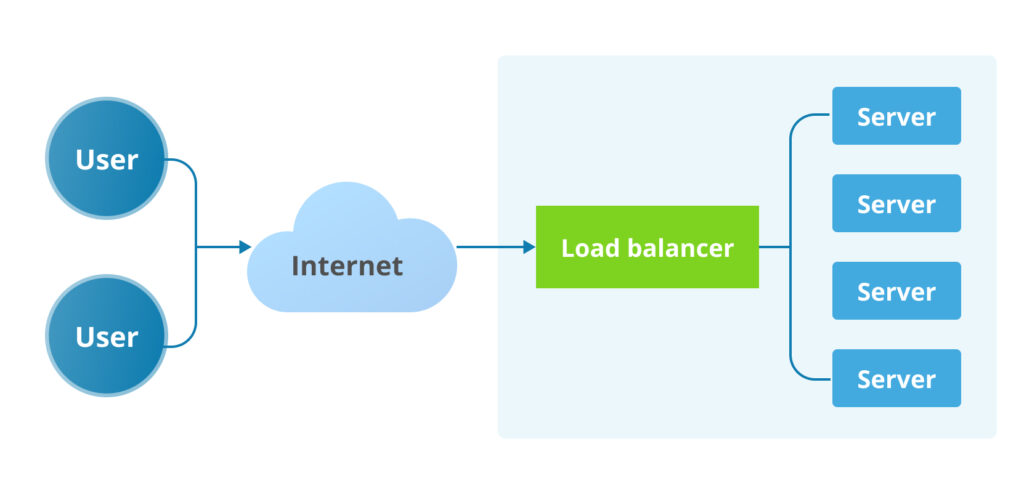A network load balancer ensures efficient network traffic distribution between a server pool. In other words, what does a load balancer do? Like a traffic controller on the road, it manages traffic by distributing it across available servers.
- What is the rationale behind load balancing in networking
- Benefits of using network load balancers
- What types of load balancers are there?
What is the rationale behind load balancing in networking
Even load distribution between servers is the end result rather than the ultimate goal of load balancing in a network. The primary purpose of a network load balancer is to make web services and applications more readily available and faster for end-users.
There are several approaches to setting up network load balancer operations. Here are the most popular options:
- Least Connection Method. Traffic is redirected to the server with the least active connections.
- Least Response Time Method. Traffic is redirected to the machine with the least active connections and the least average response time (both parameters matter).
- Round Robin Method. Traffic is redirected to the first available server (chosen randomly). Then this machine is placed at the end of the queue so that the next time, the network balancer will access it only after checking all other servers. This method works for a pool of servers with similar/same configurations and a small number of active connections.
- IP Hash. Сервер, на который будет перенаправлена нагрузка, определяет IP-адрес клиента.

Benefits of using network load balancers
Today, without a network load balancer, it is challenging to build an IT infrastructure that balances performance, availability and cost. Using a network load balancer opens up several key opportunities:
- Increased fault tolerance to avoid a single point of failure by distributing the load across several system components;
- efficient use of available computing resources so that virtual machines will not be overloaded with requests or, on the contrary, will not work at a quarter of their capacity;
- redundancy – if one server fails, the network balancer will promptly redirect traffic to an operational one, thus preventing unforeseen downtime;
- deciding to scale in no time – when the current server or a cluster of servers can no longer handle the increased number of requests, the network balancer will quickly add a new server and start using it to redistribute the load;
- protection against DDoS attacks – thanks to special algorithms used to assess traffic, it is possible to reduce the risks of cyberattacks by dozens of times.
As network balancers have evolved, they have gained extra features. Today, they can accelerate and provide greater security for applications, launch the creation of new virtual machines to handle increased load, generate predictive analytics, monitor application performance, and accomplish many other tasks.
Colobridge’s Expert:
“In a typical hyperscaler, Network Load Balancing is available as one or even two separate services – for example, one handles balancing traffic from the Internet to the virtual machines, while the second one is used only for traffic within the virtual network (so-called Internal Load Balancing). Colobridge uses hardware-based FWaaS (“Firewall as a Service“). It makes advanced network balancing tools available as part of a relatively affordable service package. Moreover, internal network traffic can be balanced between servers through various balancing schedules (static, round-robin or weighted). SSL/TLS load balancing includes protection against protocol downgrade attacks.”
What types of load balancers are there?
Based on how network load balancers work, they are divided into two types: software and hardware load balancers.
Hardware balancers provide higher security and increased bandwidth (compared to their software counterparts). On the other hand, only experienced IT specialists can configure and maintain them, and this solution cannot be scaled up and is quite expensive.
Software (or software-defined) balancers are more affordable, flexible, and easily scalable, and they can run on almost all standard devices. They are optimal for load balancing in the cloud and can be billed using a pay-as-you-go model, i.e., only when it is indispensable to balance traffic. Ask Colobridge technical experts how to build an optimal IT infrastructure in terms of performance, cost and security tailored to your business’s specific needs. We will explain the peculiarities of using a network load balancer in your infrastructure and will also offer the services associated with migration from another site and further administration.





